Poor posture is a leading cause of chronic pain, overuse injuries and long-term health complications. It can even lead to conditions such as hunchback, influencing appearance, confidence and self-esteem.
Many Americans turn to posture devices to help them avoid pain, sit and stand straight, and appear taller and slimmer. But with thousands of posture braces, gadgets, and accessories on the market, how do you know which device you can trust to improve your posture – and not make things worse? The following compares different types of posture devices plus reveals chiropractor tips for using them correctly.
BackEmbrace: Comfy, Stylish Posture Support You'll Want to Wear
Contents
- Types of posture devices
- Posture correctors and braces
- Electronic trainers
- Posture pumps
- Yoga sticks
- Neck stretchers
- Neck relaxers
- Posture bras
- Shoes and inserts
- Belts
- Pillows
- The best posture devices
5 types of posture problems and how to fix your posture
Types of Posture Devices
Compare the following types of posture devices to determine which will work best for your needs.
Posture correctors and braces
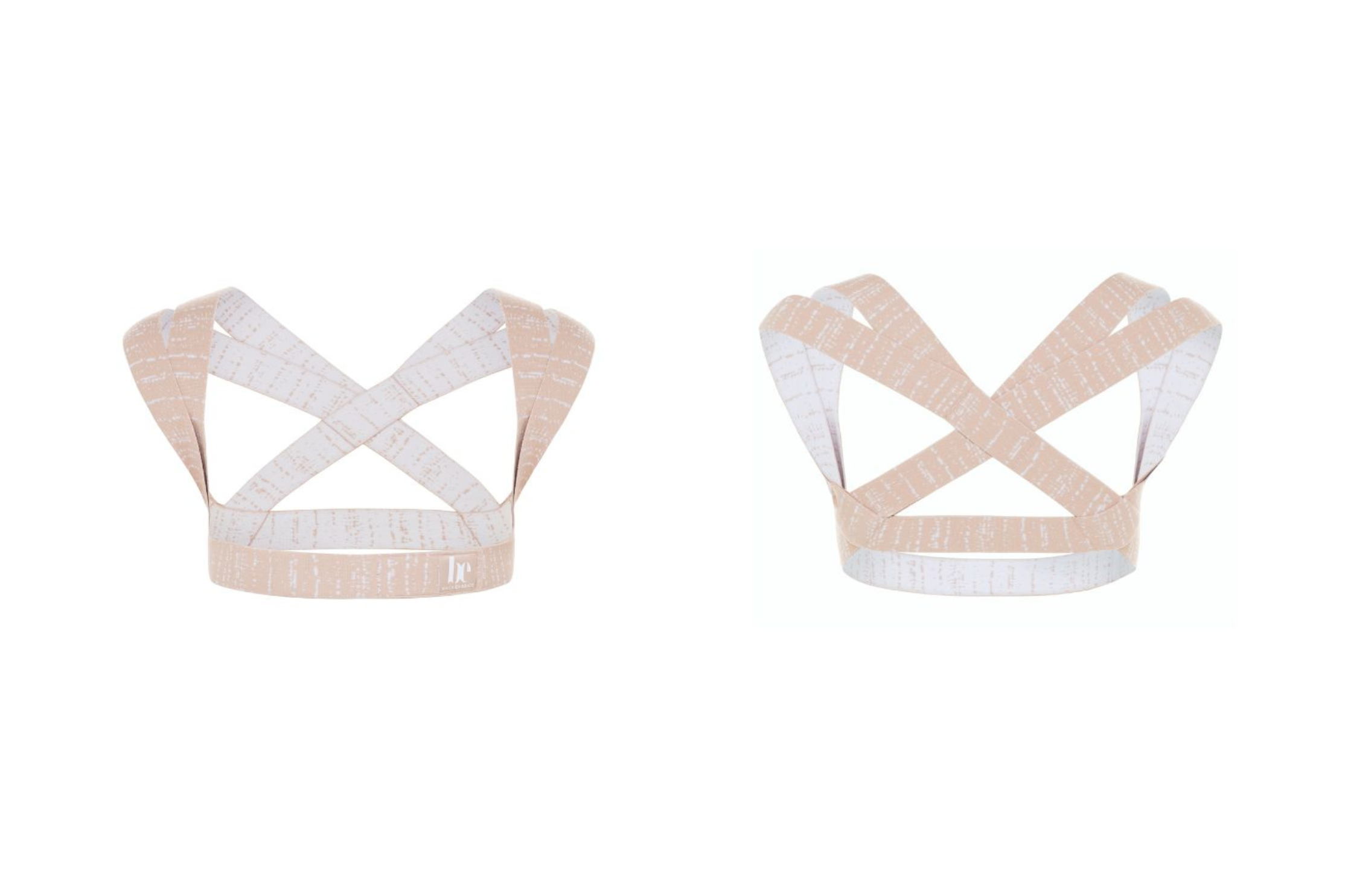
Posture correctors incorporate active training alongside passive positioning, giving you the physiological feedback needed for good posture.
- Passive: They align your spine and gently retract your shoulder blades to help you maintain proper posture
- Active: They provide constant feedback to train your muscles over time
Posture correctors aren’t meant to be worn 24/7. Rather, they’re designed to be worn for a few hours at a time, up to six hours per day. The goal is to eventually be able to maintain good posture without the brace, not to learn to rely on it for support.
Do Posture Correctors Work? Here's What Back Doctors Say
Unlike some devices, you don’t need to set time aside for a posture corrector. You can wear it at work, around the house, and while driving, bicycling, or working out. Some posture correctors are lightweight and comfortable enough to wear under clothes yet stylish enough to wear over clothing.
Posture corrector before & after photos and stories
Look for a high-quality posture corrector constructed from premium materials that won’t disintegrate in the wash and that’s comfortable enough for extended wear – if you won’t wear it, it won’t help – and seek a doctor-recommended posture brace for best results.
Posture correctors for women: Stylish posture braces that can be worn over or under clothing
“Most of us slouch. Everyone thinks they sit up straight, but most people don’t. A posture corrector reminds you to sit up straight,” says Dr. Mike Hollern, chiropractor and owner of Hollern Chiropractic Spine & Disc in Louisville, Kentucky. “If you have problems, it’s good to use things that help address them and hopefully reestablish in your body the proprioception for the positions your body was designed to hold.”
Pros
- Provides passive support and active training to help you hold proper posture when you’re not wearing it
- Some models can be worn over or under clothing
- Many doctors, chiropractors, and physical therapists recommend posture correctors and braces
Cons
- Requires a commitment to wearing the corrector daily – at least until your muscles have been trained
- The most effective posture correctors may cost a little more than other devices – but you get what you pay for
Posture correctors for men: Discreet yet effective posture braces that are comfortable under clothing
Electronic trainers
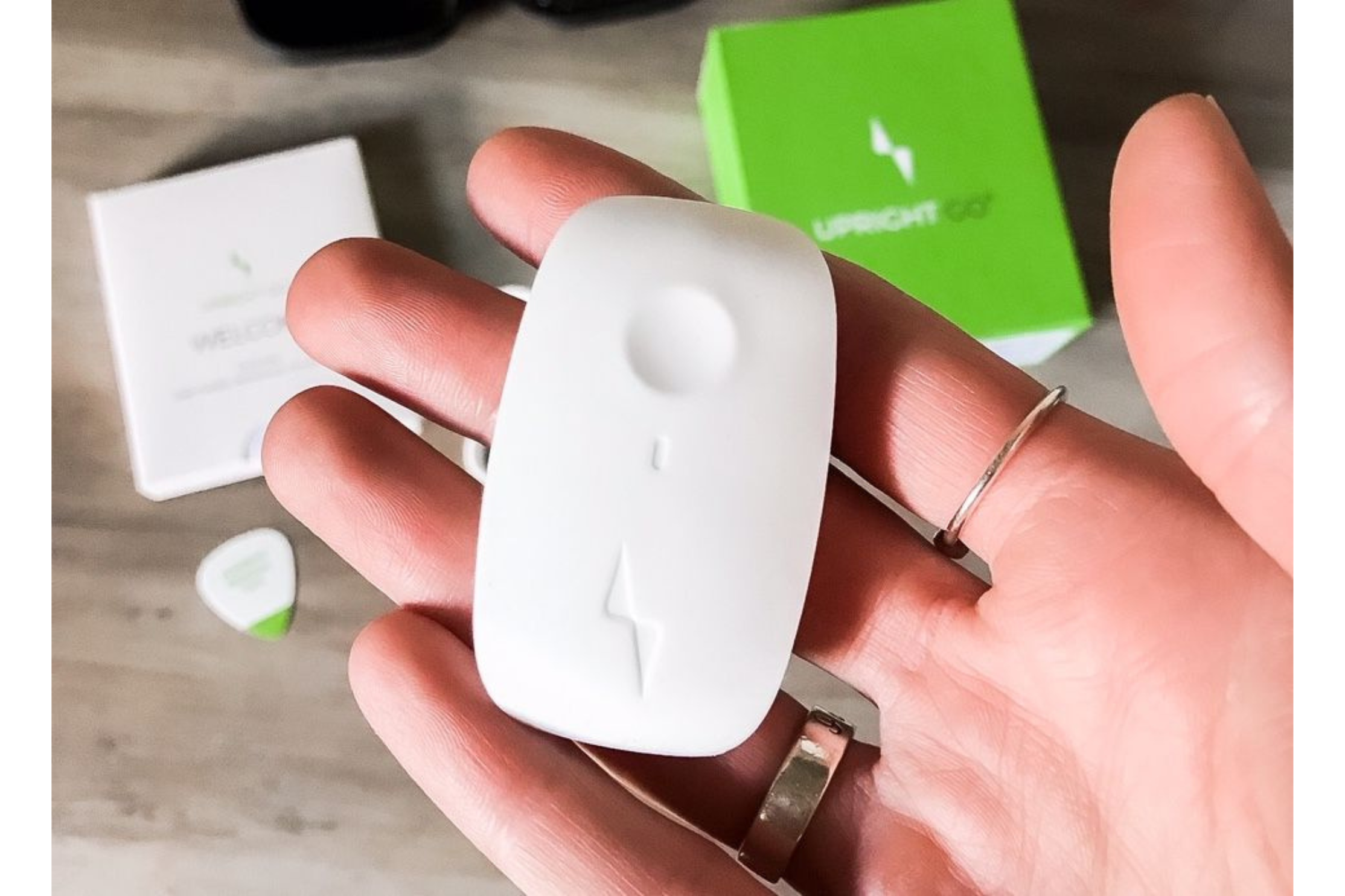
Electronic posture trainers are typically worn around the neck – like a necklace, with a device that rests between the shoulder blades. They monitor your posture and provide feedback when you slouch, reminding you to sit up straight. These trainers typically pair with apps that help you track your progress over time.
How to fix hunchback, according to doctors and therapists
Electronic trainers only offer active training, not passive positioning. It might take some getting used to having a device hanging between your shoulder blades, and the device could appear as a lump if you try to hide it under your shirt.
Discover the best apps for improving your posture
Pros
- Active training with physiological feedback
- Track progress with an app
Cons
- No passive positioning
- Not discreet
- Could cost more than other devices (especially if you need to buy a subscription)
Posture pumps

Posture pumps are devices that use air to help reshape your posture. Essentially, you lie down with your neck on the device and pump air to decompress and shape your cervical spine.
Bad posture causes headaches: Here’s how to stop them
Posture pumps are passive because they do all the work – there is no active component to them. That means they can help you put your neck in the proper position, but they don’t strengthen postural muscles.
You’ll need to carve out time to use a posture pump since you can’t simply put it on and go about your business as you can with a corrector or trainer.
“You have to be careful with pumps. They’re good short-term and intermittently, but you don’t want to use something that just stretches the neck and that’s it,” says Dr. Hollern. “It gets into compensation. The body starts to go, ‘wait, this isn’t normal.’ If you use a posture pump, pump it for a minute or two and let it out. That tricks the muscles to go into guarding when you let the air out. Then pump it back up to get some separation of joint space, not must muscles being pulled.”
Pros
- Easy to use – just lie down and pump
Cons
- Only passive positioning – no active training
- Primarily focuses on neck posture, not whole back posture
- Relatively expensive
Yoga sticks
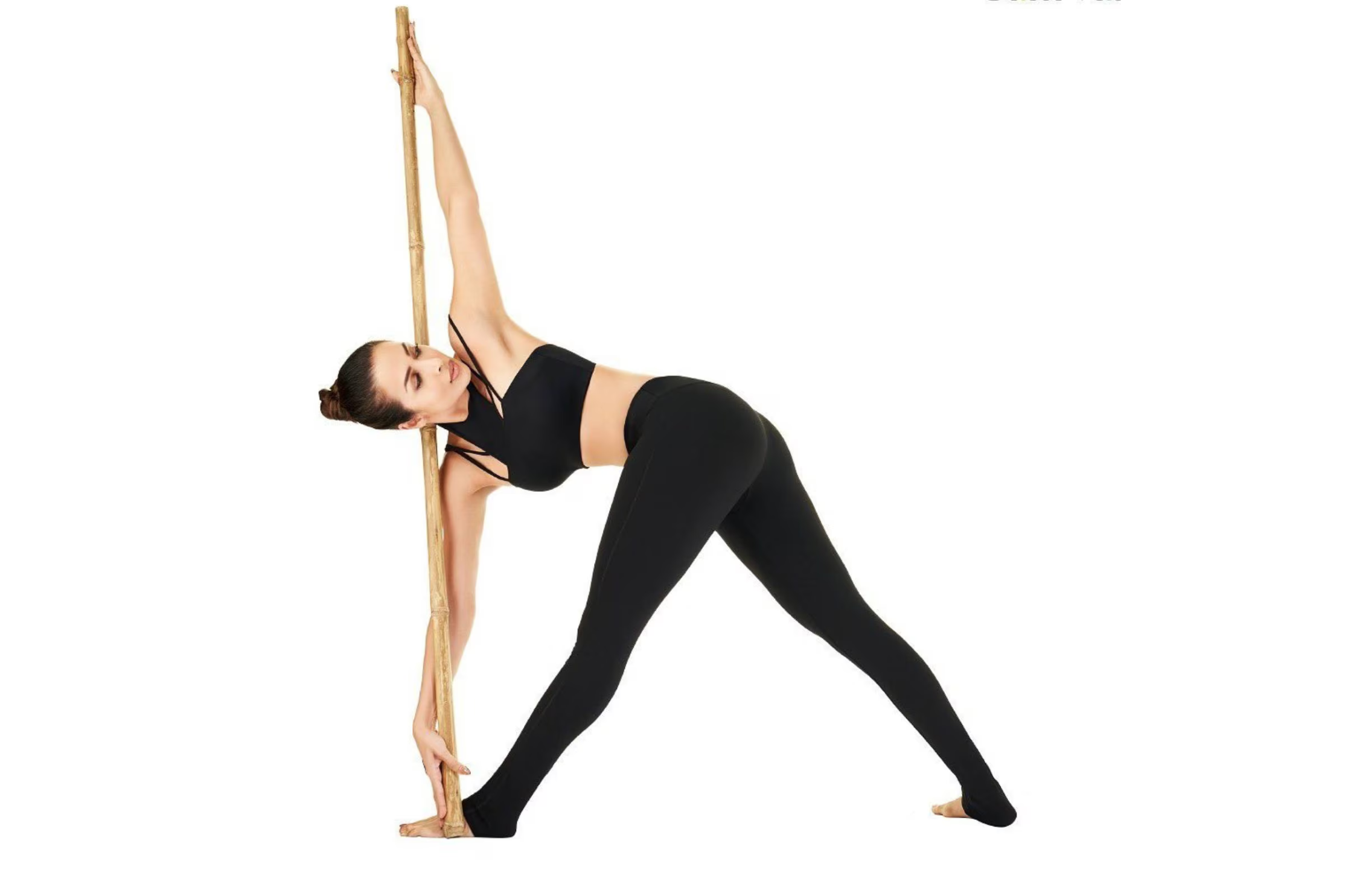
Place yoga sticks behind your back and loop your arms behind them to help position your body, then bring your head backwards to touch the top stick. In this manner, you’re getting passive positioning because the sticks help keep your posture in place and active training because you’ll need to keep your ears over your shoulders to maintain good posture.
How to prevent back pain when sitting: What doctors say
Yoga sticks are good for occasional use – even daily – but they’re more of an exercise tool than something you can wear or use all the time. Some models are foldable for portability, which is ideal since you probably don’t want to tote them around the office.
Pros
- Provides passive positioning and active training
- Relatively low cost
Cons
- Must set aside time to use yoga sticks as part of your workout
- Can’t be used while you’re doing other activities (working, watching TV, jogging, etc.)
- May feel awkward to use or even painful to some users
Neck stretchers
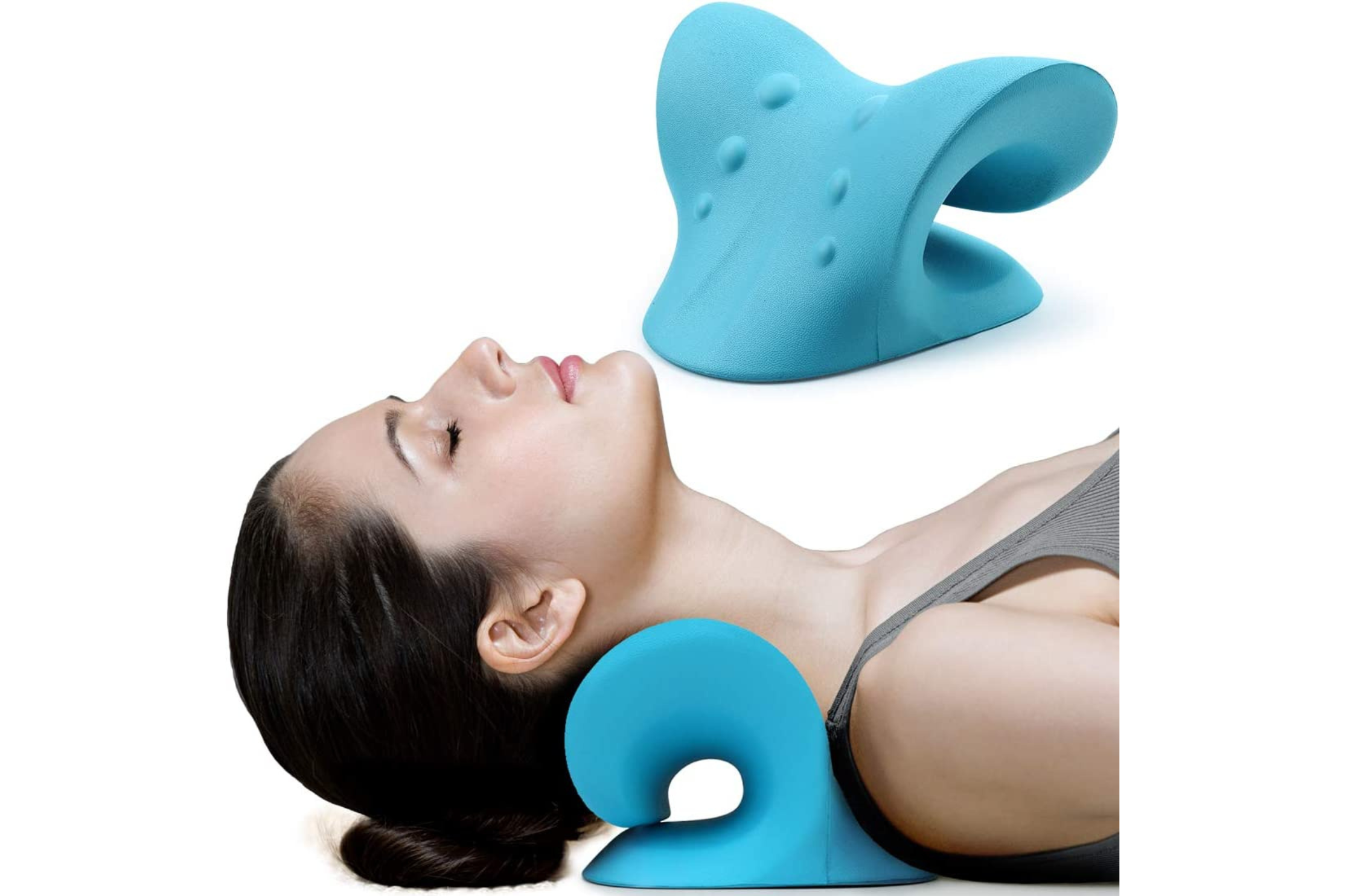
Neck stretchers are devices that promise to restore the natural curvature of your spine, though with their springs and things, these gadgets often look more like novelties than therapy devices.
How to fix tech neck, according to doctors
Some models are passive, purporting to stretch your neck and decompress your vertebrae; while others are active, providing resistance to strengthen your muscles so you can hold proper posture on your own. Either way, it’s best to consult a doctor before using a neck stretcher – the last thing you want to do is risk spine health on an unproven device.
Further reading: 20 best posture stretches, recommended by posture pros
Pros
- Easy to use
Cons
- Some models are expensive
- May not be as effective as other options
- Must set aside time to use them
Neck relaxers

Neck relaxers are similar to posture pumps, except they don’t typically use air and they’re not adjustable. Instead, you lie down on the static device to allow your neck to gently stretch backward into a natural curve.
How to use a posture corrector
“Sometimes people will lay on something if they have a curve in their neck that they need to support so they don’t get flattening of the cervical curve, which can wreak havoc on the rest of your body,” says Dr. Hollern. “Lay on it for three or four minutes tops, then do another session. All of [these devices] have some degree of usefulness, but if you use it as a crutch, you can create more problems.”
Pros
- Easy to use
- Inexpensive
Cons
- May not be as effective as other options (only passive)
- Must set aside time to use them
Posture bras
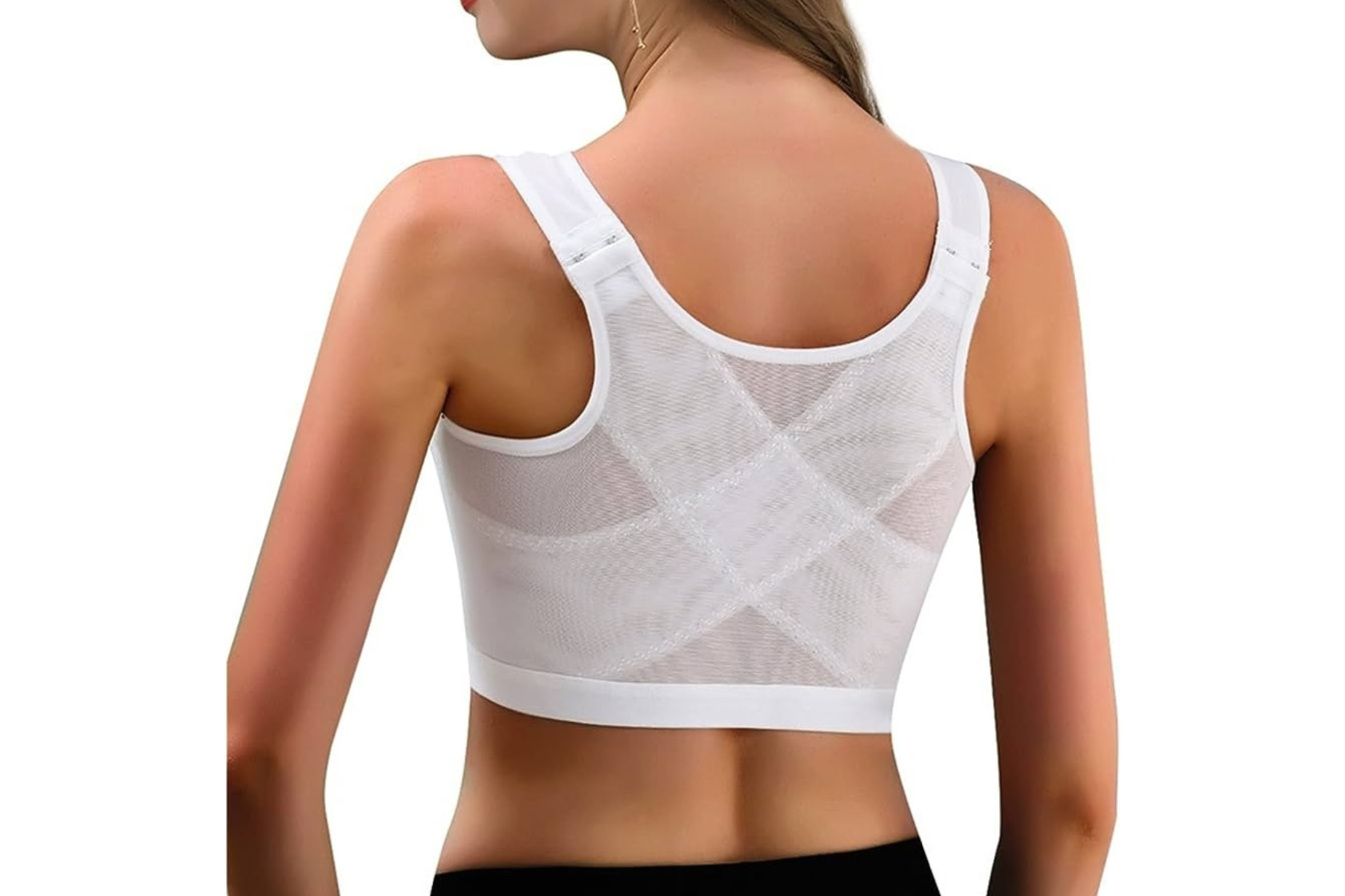
Posture bras are bras that include additional support to help you find and maintain proper posture. Like traditional posture correctors, some offer both passive positioning and active training, and they may have some benefits by providing support to help with posture.
Postpartum Back Pain: Doctor Tips to Relieve Back Pain After Childbirth
However, posture bras might prove inconvenient if you only wear them for part of the day (as recommended for posture correctors), and you may need to purchase multiple posture bras if you want to use them daily. In addition, you might not find the perfect fit, so a good alternative is to pair your preferred bra with a traditional posture corrector.
Pros
- Provides passive positioning and active training
Cons
- May not provide the same support as your preferred bra
- May need to purchase several posture bras to wear daily
- Inconvenient if you’re only wearing for part of the day, since you’ll need to change bras
Posture shoes and inserts

Posture shoes and inserts can be effective if your posture issues originate in your feet, which is why some orthopedists prescribe them. If you’re considering this option, seek an orthopedist who is experienced with posture, as the wrong shoes and inserts could cause more issues.
Guide to proper sitting posture: Doctor-recommended positions
“It depends on the body you’re talking about. If you have a flat arch, it’s good to put an insert in there, because when the arch is flat, the body tends to pronate, causing you to walk on the inside of the foot, which then affects your knees and pelvis, which is called a kinetic change,” says Dr. Hollern. “When we were kids, we used to say the foot bone is connected to the knee bone which is connected to the hip bone – there’s a lot of truth in that saying.”
Pros
- May be effective if posture problems originate in your feet
- Recommended by some doctors
Cons
- May be uncomfortable
- May be expensive
Posture belts

Posture belts might provide some support, but they don’t actively train you to maintain proper posture. There are likely better options.
Pros
- Might provide some support
Cons
- Do not actively train you
- Do not passively position you
- Better options are available
Posture pillows
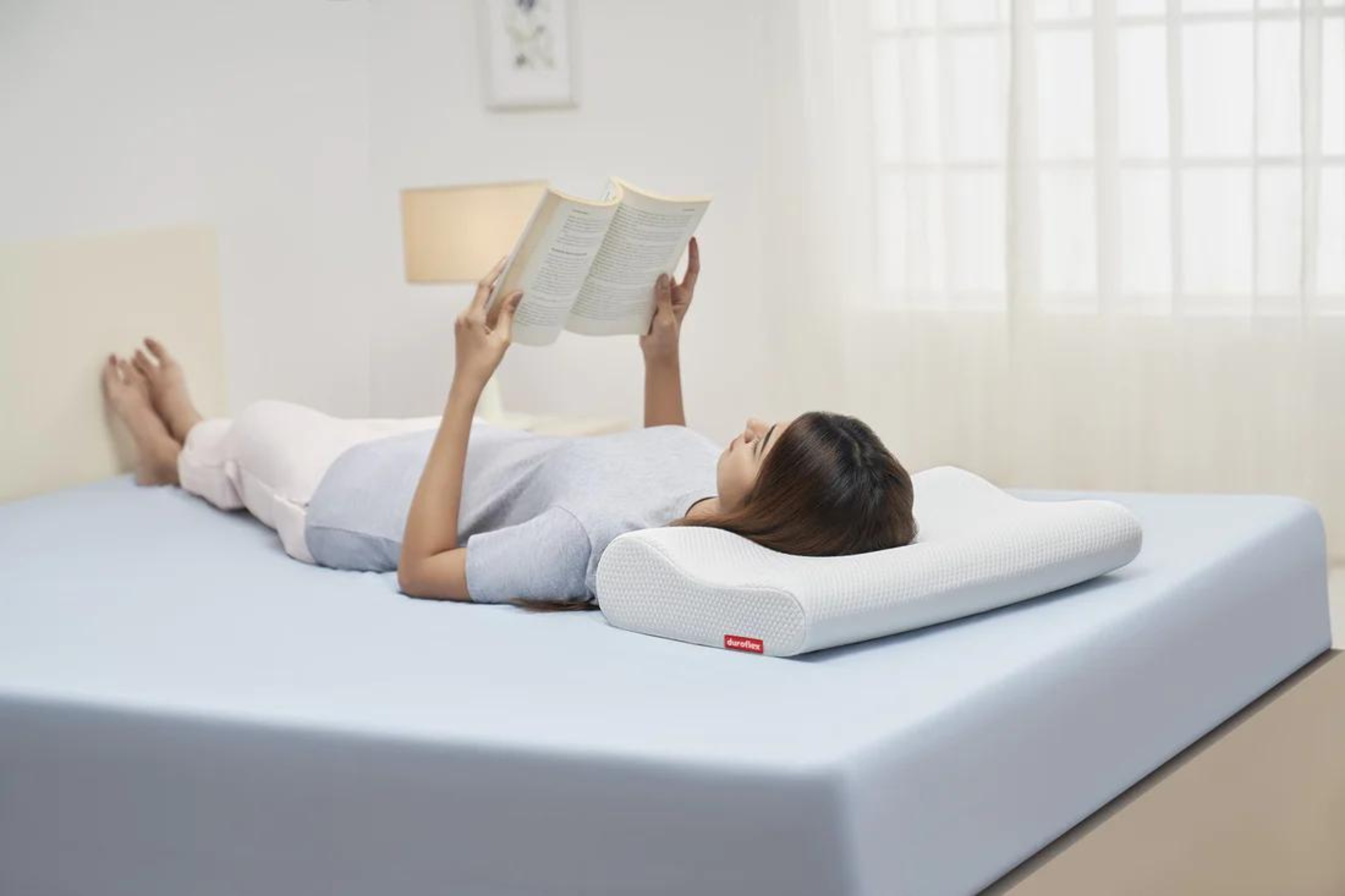
Everyone would love to magically fix their posture while they sleep, which is why there’s a healthy market for posture pillows. But while pillows may help you get in a comfortable, neutral posture position that relieves pain when you wake, they won’t train you to hold proper posture once you’re up and moving around.
However, lumbar pillows and cushions used when sitting at a desk are useful because they can help you maintain the proper curvature in your lower spine, which can in turn help you naturally sit up straight.
Guide to proper sitting posture
“I tell patients to put a small pillow behind their back for lumbar support,” says Dr. Hollern. It can be just a small couch pillow that supports your lower back.”
Pros
- Comfortable
- Offers support and helps train muscles when sitting
Cons
- Ineffective for training muscles when sleeping
The Best Posture Devices
There are many options when it comes to posture devices. Generally speaking, the best are those that offer both passive positioning and active training. Outside of that, it’s important to consider which type of posture device fits into your lifestyle. Do you want something you can put on and wear through your daily routine, or do you prefer something that you only use a few minutes each day?
How to Have Good Posture: Chiropractor-Approved Tips
The answers to these questions can help you find the best posture device for your needs and lifestyle.
1. Does it work?
Read reviews, see if it’s endorsed by doctors, and look for legitimate before and after stories and photos. If you’re going to invest your time and money into correcting your posture, do it wisely and choose a product that’s proven to help you achieve noticeable results. In most cases, that’s a posture device that works while you move.
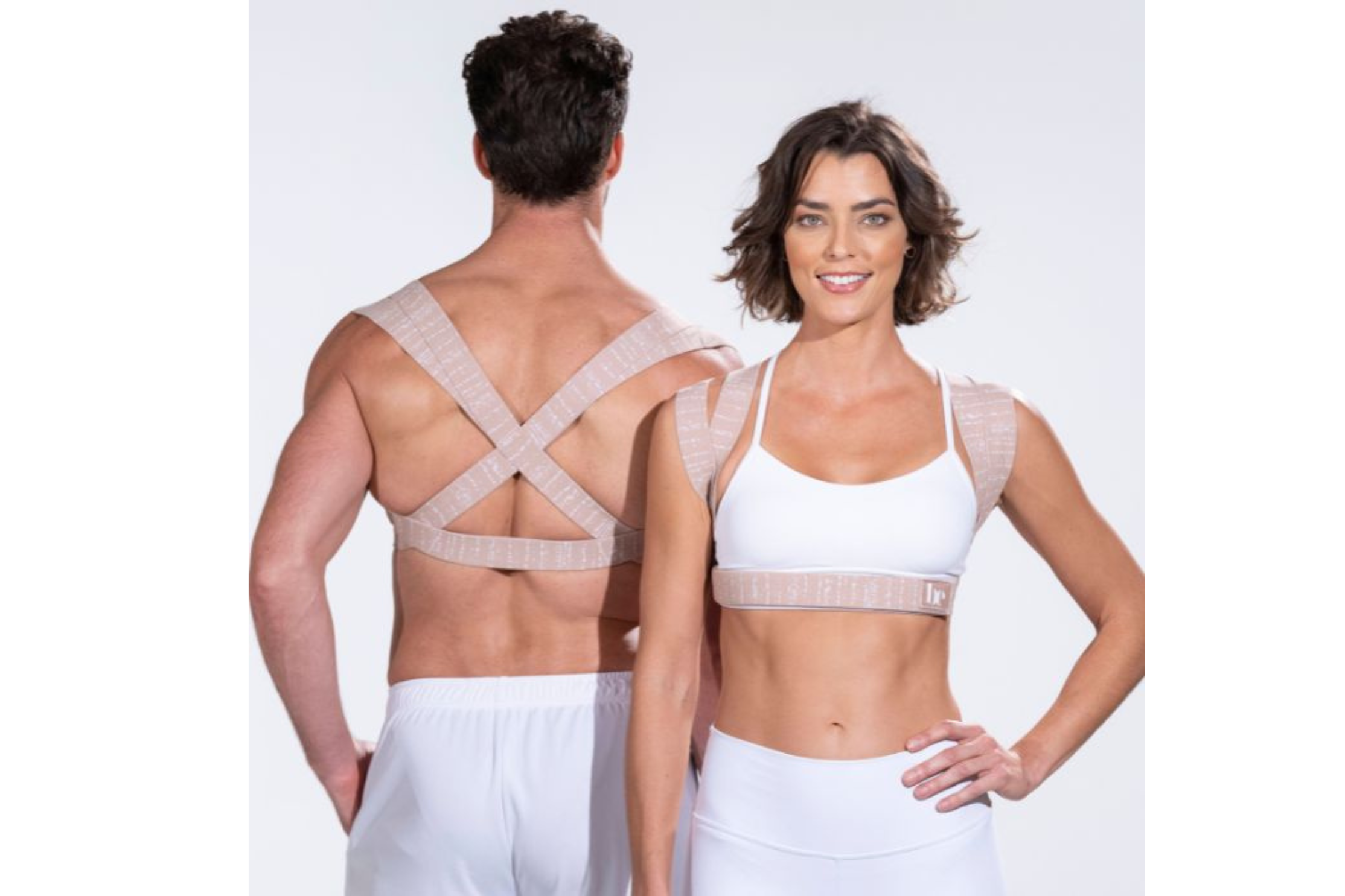
“Movement is critical. Your body has to move or it starts breaking down, especially as you get older,” says Dr. Hollern, who recommends chiropractic care in addition to any posture devices. “It’s good to get your spine adjusted to facilitate intersegmented movement of joints, which can reduce the chances of osteoarthritis and muscles overcompensating.”
2. Will you use it?
Posture devices are no good unless you use them. Ask yourself:
- Is it convenient?
- Do you have to make time to use it?
- Will you war it?
- Is it comfortable and stylish?
- Is it lightweight and breathable?
You might not need a posture device if you engage in other activities such as posture stretches, exercises, and routine chiropractic care.
“If someone’s actively getting adjusted regularly, the likelihood of needing a posture device is greatly diminished,” says Dr. Hollern. “But they are good for people who have mostly sedentary lifestyles or that do something on a repetitive basis, like working on an assembly line.”
3. Is it quality?
Is it made from high quality, durable materials? Is it easy to clean? Will it hold up to regular washings? Does it have many good reviews and doctor recommendations? You don’t want to trust your spine health to inferior devices, which could cause more harm than good, so be sure that any posture device you buy meets high quality standards.
Finally, remember that posture devices aren’t magic cure-alls. They work best when used as part of a comprehensive plan that includes stretches, exercises, and chiropractic care.
“If you have aches and pains and need support, posture devices work effectively, but you can’t just depend on devices to do the work for you. It takes individual effort, and that all goes back to movement,” says Dr. Hollern. “The biggest problems occur when people don’t move enough, especially if they’re sedentary and sit all day or if they do the same thing all day.”
Looking for a lightweight, comfortable, stylish posture corrector that works? Try BackEmbrace!
